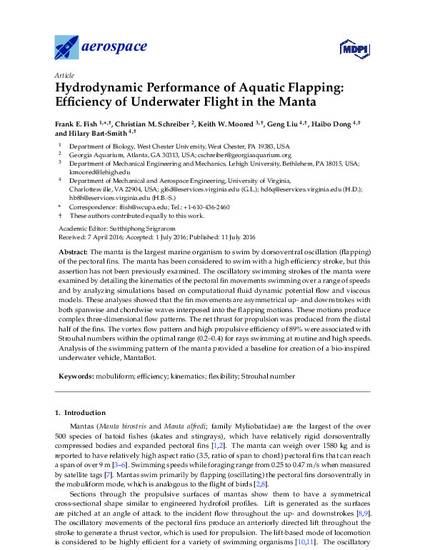
The manta is the largest marine organism to swim by dorsoventral oscillation (flapping) of the pectoral fins. The manta has been considered to swim with a high efficiency stroke, but this assertion has not been previously examined. The oscillatory swimming strokes of the manta were examined by detailing the kinematics of the pectoral fin movements swimming over a range of speeds and by analyzing simulations based on computational fluid dynamic potential flow and viscous models. These analyses showed that the fin movements are asymmetrical up- and downstrokes with both spanwise and chordwise waves interposed into the flapping motions. These motions produce complex three-dimensional flow patterns. The net thrust for propulsion was produced from the distal half of the fins. The vortex flow pattern and high propulsive efficiency of 89% were associated with Strouhal numbers within the optimal range (0.2–0.4) for rays swimming at routine and high speeds. Analysis of the swimming pattern of the manta provided a baseline for creation of a bio-inspired underwater vehicle, MantaBot.
Available at: http://works.bepress.com/frank_fish/31/
